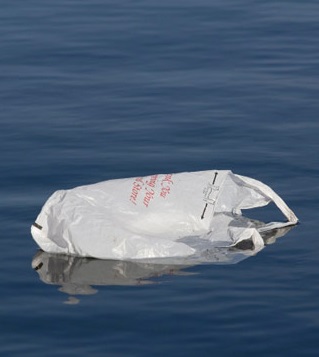Sea plastic re-modelled
 A new model has provided an updated estimate of plastic pollution at sea.
A new model has provided an updated estimate of plastic pollution at sea.
Greek researchers say their new model to track how much plastic rubbish ends up in Mediterranean waters shows that around 17,600 tonnes of plastic goes into the sea each year.
Of that amount, about 3,760 tonnes are floating on the surface. They found most of the rubbish (84 per cent) washed up on shore, with the remainder sinking deeper in the sea.
The Mediterranean Sea is considered a hot spot for plastic pollution. This is likely due to its densely populated coastlines, fishing, shipping, tourism, and a limited outflow of surface water to the Atlantic.
At the same time, the Mediterranean is rich in biodiversity, making it an area of concern for the conservation of marine ecosystems.
Plastic pollution affects all levels of marine biodiversity, with micro- and macroplastic particles found at the sea surface, beaches, the seafloor, and within the bodies of big and small marine animals.
It has also been reported that humans ingest plastic through seafood consumption.
The new model developed by researchers from the Hellenic Centre for Marine Research, tracks the pathways and ultimate fate of plastic debris in the Mediterranean Sea.
The model was used to simulate the period from 2010 to 2017, tracking plastics from land-based sources such as rivers and coastal cities, while taking into account important dispersion processes such as sinking, vertical/horizontal mixing, wind, and currents. It also identified potential accumulation patterns of micro- and macroplastics in the surface layer, water column, seafloor, and on beaches.
This revealed that the total annual plastics load going into the Mediterranean is approximately 17,600 tons, of which 3,760 tons are currently floating in the Mediterranean. Of the total, 84 per cent ends up on beaches and the remaining 16 per cent ends up in the water column or the sea floor.
“Simulations of plastic distribution in marine environments are currently characterized by a large degree of uncertainty. Experimental data on several processes that affect the fate of plastics, such as sinking, ingestion by marine organisms and fragmentation into smaller pieces are still quite limited,” said lead author Dr Kostas Tsiaras.
“Our model showed a reasonable skill in reproducing the observed distributions of plastics in the marine environment and thus can be used to assess the current status of plastic pollution in the Mediterranean and evaluate the impact of future cleaning actions and management plans.”
The model also described biofouling as a potential mechanism for the removal of microplastics from the sea water surface. Biofouling happens when micro-organisms such as algae accumulate on floating and submerged objects, including plastic debris.







 Print
Print